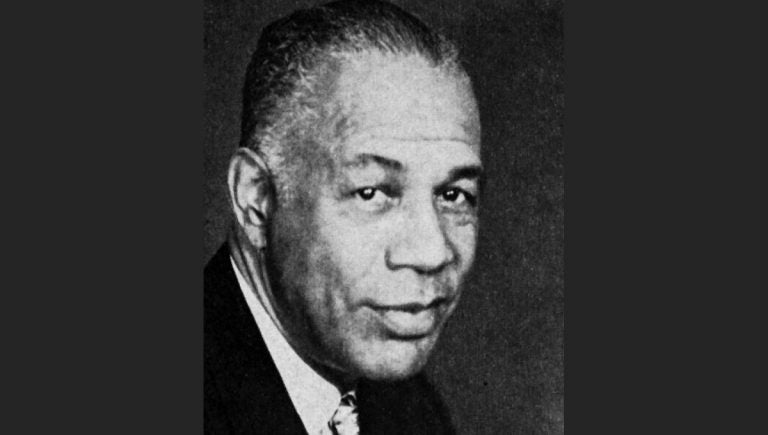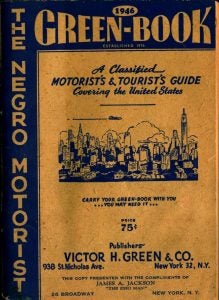Rare copy of historic ‘Green Book’ travel guide on digital display at Delaware museum
A rare copy of the “Green Book” seen in the Oscar-winning film of the same name recently arrived at Hagley Museum and Library in Delaware.
Listen 0:58
Victor Hugo Green (The New York Age, 23 August 1958, Saturday, page 32/Wikimedia Commons)
The film “Green Book” — which won best picture at the Oscars Sunday night — tells the story of an African-American musician who tours the segregated South in 1962 and his white driver. The movie title refers to an annual guidebook published by Victor Green starting in 1936 to help black motorists find friendly hotels, restaurants, bars, and gas stations while traveling.
A rare copy of that guide is now part of the collection at the Hagley Museum and Library in Wilmington, Delaware.
“It’s more than just an automobile guide. It really tries to address a need which was being ignored by other automotive directories of the day,” said Max Moeller, curator of published collections at Hagley. “The Green Book seems to be relatively rare at this point.”
The museum’s copy was published in 1946 and includes recommendations around the country.

The book came to the museum as part of the John Margolies Collection of Travel Ephemera. Margolies was a prolific photographer who captured images of roadside attractions and novelty architecture throughout the country. Much of his work preserved scenes of Americana that have since faded away. Along the way, he picked up brochures, maps, and other travel guides such as “The Negro Motorist Green Book.”
“It’s a very unfortunate part of American history, one that people are increasingly recognizing needs to be addressed and should be documented,” Moeller said. “And the evidence of it should be preserved in libraries so that present-day scholars and future scholars could understand the extent of what injustices were being committed and how that needs to be guarded against.”
Green, a postal worker from Harlem, was inspired to create the book by a similar travel guide written for Jewish families seeking safe places to visit.
In later years, Green’s introduction to the book included a message of yearning for a day when such a directory would be unnecessary.
“That is when we as a race will have equal opportunities and privileges in the United States,” he said. “It will be a great day for us to suspend this publication for then we can go wherever we please, and without embarrassment.”
The Green Book stopped publication after its 1967 edition, three years after the Civil Rights Act of 1964 outlawed racial discrimination in public accommodations.
Staff at the Hagley Museum are in the final stages of processing the Margolies Collection, and once that is completed, the Green Book and other items will be available for researchers and the public to explore.
A digital copy of the Green Book is also available for view on the museum’s website.
WHYY is your source for fact-based, in-depth journalism and information. As a nonprofit organization, we rely on financial support from readers like you. Please give today.





